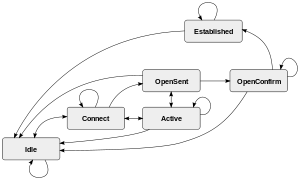The Border Gateway Protocol (BGP) is a fundamental protocol designed to direct internet[2] traffic across the globe. First sketched out informally in 1989, it was officially described in the same year in RFC 1105, and has been actively used on the Internet since 1994. BGP works as a path vector protocol and operates based on Transmission Control Protocol[1] (TCP), using port 179 for communication. It establishes sessions between peers to exchange routing information, selecting the best routes through a decision process. BGP is essential for supporting policy-based routing, traffic engineering, and preventing routing loops. However, it does face challenges such as security[3] vulnerabilities, scalability issues, route flapping, and a lack of built-in encryption, which can lead to resource consumption in large networks. Despite these, it remains a crucial component of the Internet’s infrastructure.
Border Gateway Protocol (BGP) is a standardized exterior gateway protocol designed to exchange routing and reachability information among autonomous systems (AS) on the Internet. BGP is classified as a path-vector routing protocol, and it makes routing decisions based on paths, network policies, or rule-sets configured by a network administrator.
| Communication protocol | |
 BGP state machine | |
| Abbreviation | BGP |
|---|---|
| Purpose | exchange Internet Protocol routing information |
| Introduction | June 1, 1989 |
| Based on | EGP |
| OSI layer | Application layer |
| Port(s) | tcp/179 |
| RFC(s) | § Standards documents |
BGP used for routing within an autonomous system is called Interior Border Gateway Protocol (IBGP). In contrast, the Internet application of the protocol is called Exterior Border Gateway Protocol (EBGP).